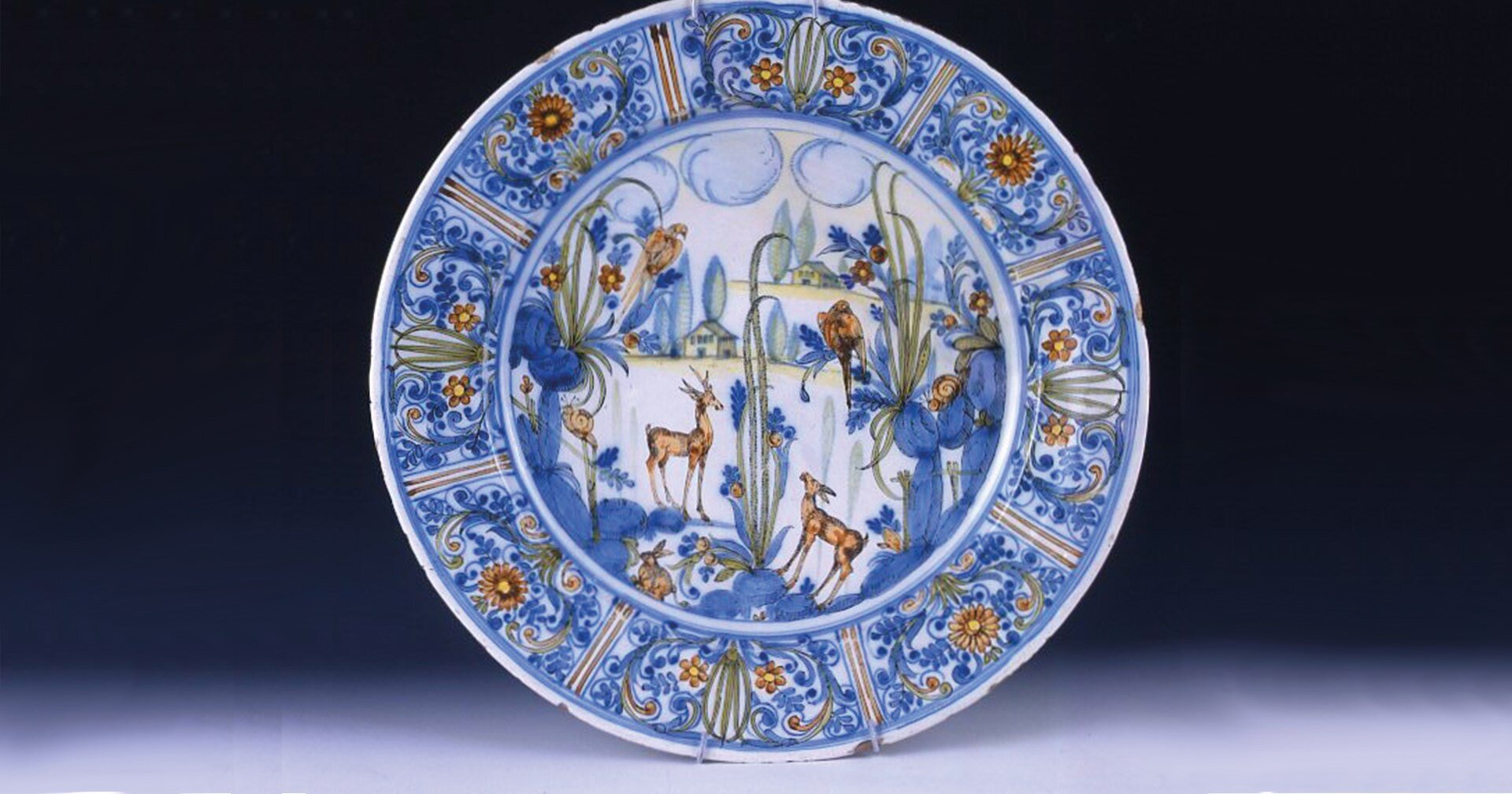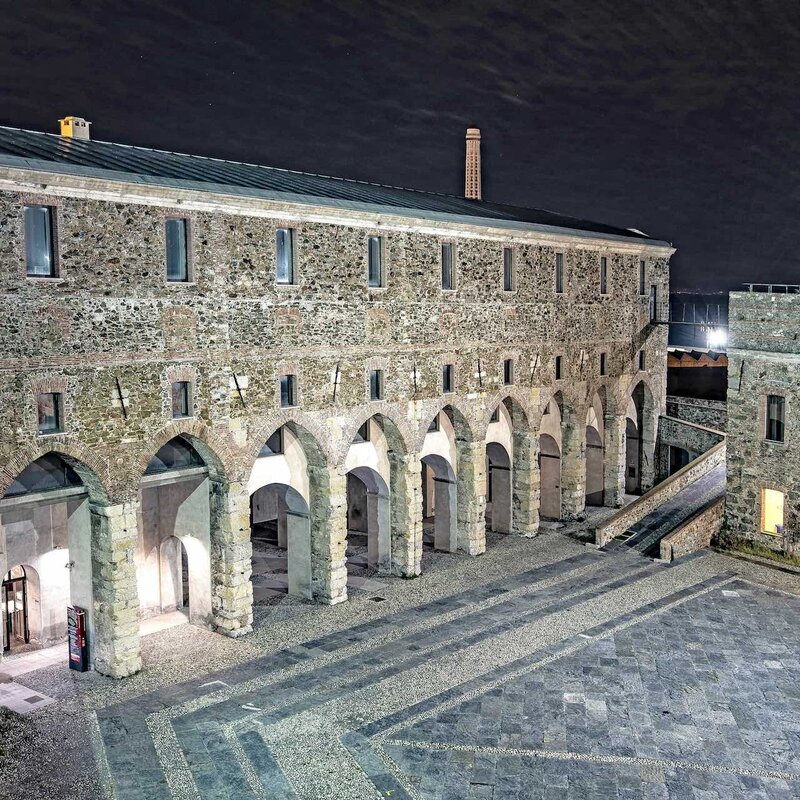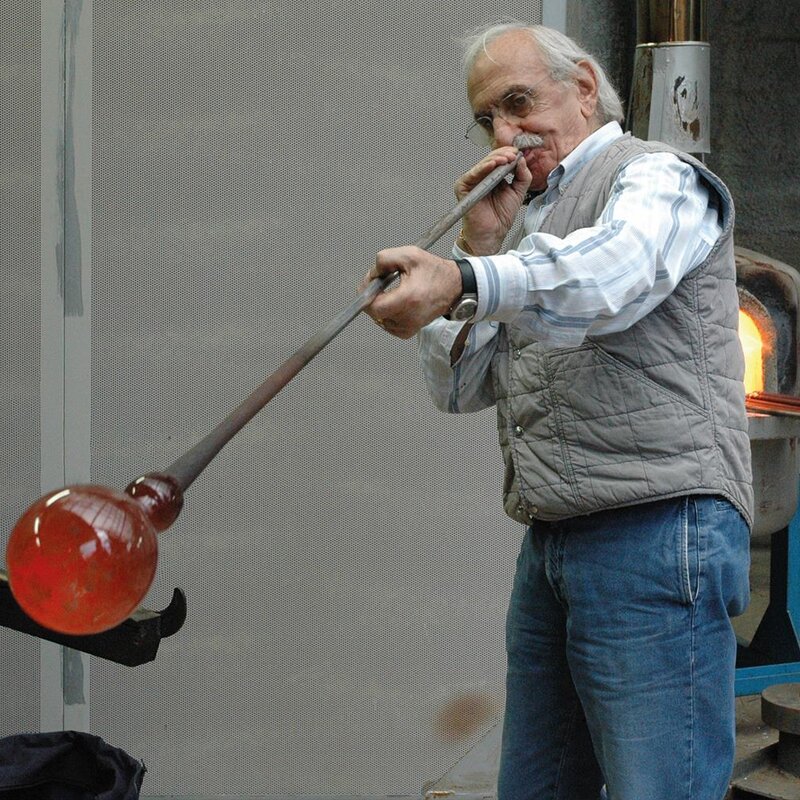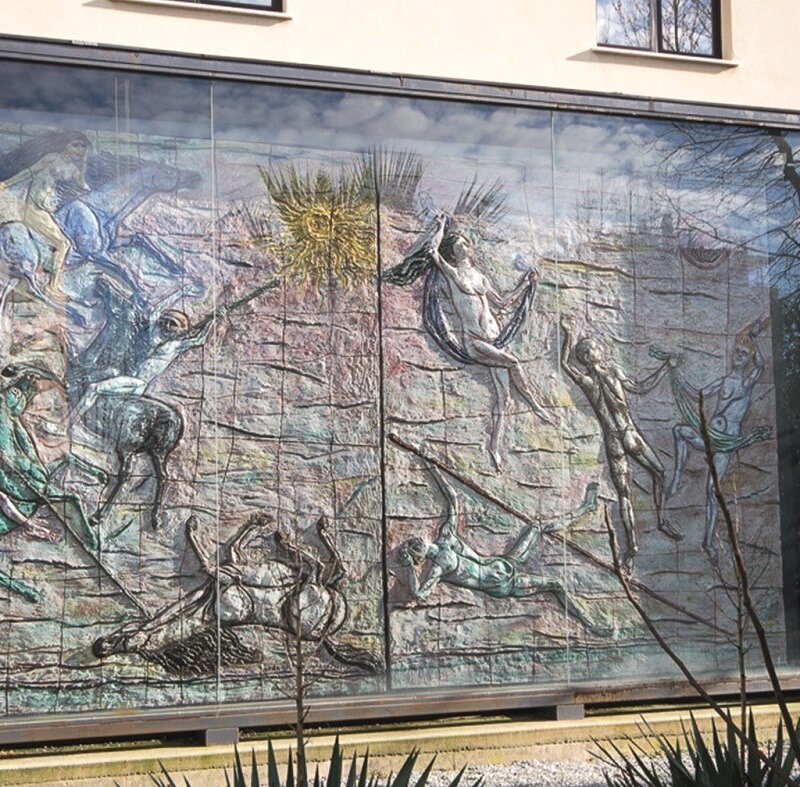Ceramis

Pottery making reached a peak during two centuries quite distant from each other, namely in the 16th and 20th centuries. The art of majolica started spreading in the 16th century. Initially, majolica was decorated with cobalt blue, and then it was painted with polychromatic patterns featuring Far Eastern naturalistic motifs including lacustrine plants, insects, birds, pagodas, and barnyard animals, as well as Western motifs such as turreted castles and religious and mythological themes.
The ‘Antico Savona’ pottery style, introduced by the Guidobono family, is decorated with human figures set in a landscape almost always featuring tufts and small rocks in the foreground, meadows, trees and some buildings, such as castles and houses, in the background. These themes draw inspiration from sacred texts, myths and literature, or from simpler decorative motifs, like cherubs or landscapes. Ceramic art experienced a revival in the 20th century.
Techniques and styles were modernized through contacts between local artists and international masters, who became their sources of innovation. The revival contributed to the opening of shops and ateliers all along the Italian Riviera, primarily around Savona. Some very famous artists such as Lucio Fontana, Piero Manzoni, Asger Jorn, and Wifrido Lam cooperated with local potters and used ceramic to create works that are exhibited all over the world.


